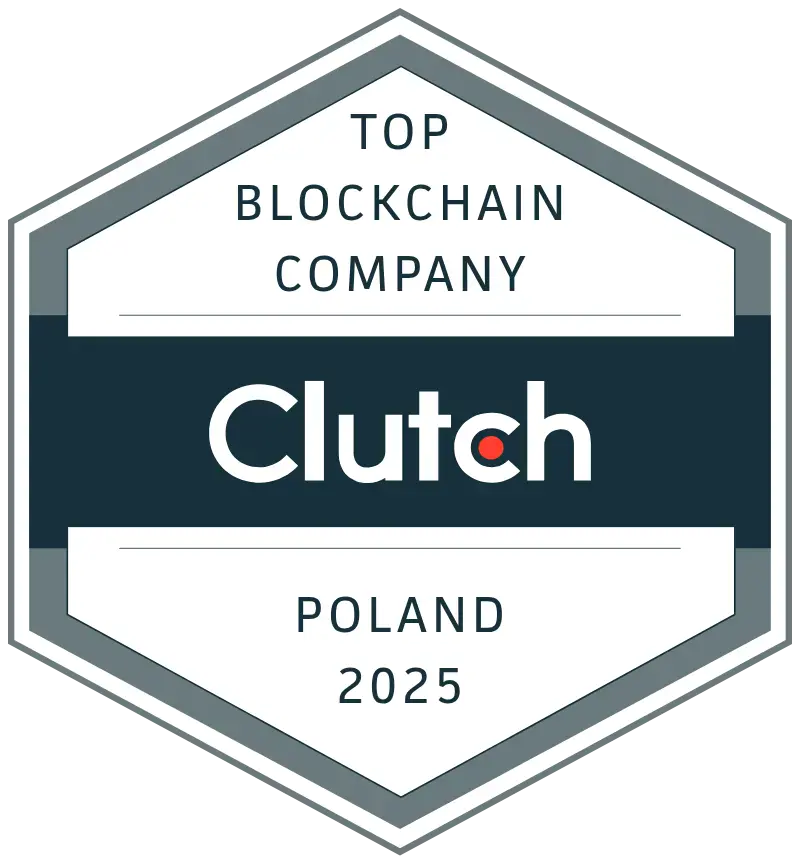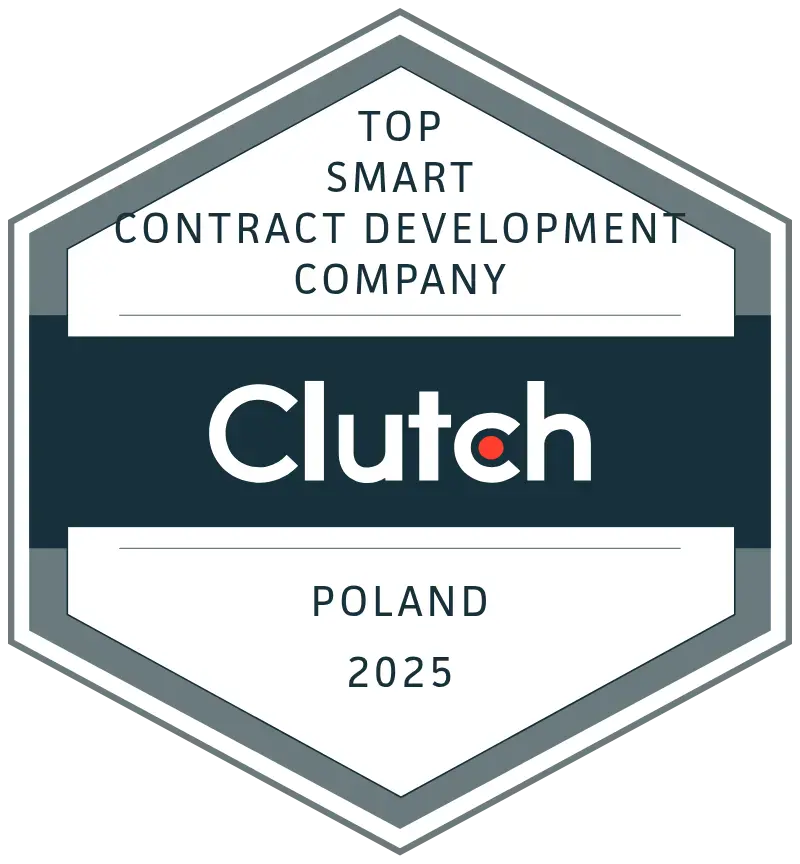Top 10 Zero-Knowledge Proof Projects Reshaping Blockchain in 2025
Tue, Nov 18, 2025 •15 min read
Category: Blockchain
In the rapidly evolving landscape of blockchain technology, zero-knowledge proofs are emerging as the fundamental infrastructure for the next generation of scalable, private, and secure decentralized applications. As we navigate through 2025, ZKP technology has moved from theoretical promise to practical deployment, with over $28 billion in Total Value Locked across ZK-based rollups (L2Beat) and the global zero-knowledge proof market projected to reach $7.59 billion by 2033, growing at a remarkable 22.1% CAGR (Grand View Research).
At Rumble Fish, we've been at the forefront of zero-knowledge proof development, building privacy-preserving solutions that demonstrate the transformative potential of this technology. Our expertise in ZKP development has enabled us to create decentralized registries that leverage zero-knowledge cryptography to verify data without exposing sensitive information, proving that ZKP isn't just theoretical - it's ready for real-world deployment. Let's explore the ten most significant zero-knowledge proof projects that are revolutionizing blockchain scalability, privacy, and usability in 2025.
Understanding the ZKP Revolution
Before diving into our ranking, it's worth understanding why zero-knowledge proofs represent such a fundamental shift. ZKPs allow one party to prove to another that a statement is true without revealing any information beyond the validity of the statement itself. Picture this: you can verify that you're over 18 without showing your actual birthdate, or prove you have sufficient funds without revealing your account balance.
Must-Know ZKP Market Statistics
Let's start with some numbers to support our claims and emphasize the importance of the ZKP ecosystem. The zero-knowledge proof market, valued at $1.28 billion in 2024, is expected to reach $7.59 billion by 2033 (Grand View Research). This isn't just about revenue; it's about the efficacy of ZKP technology in solving fundamental blockchain challenges. Currently, over $28 billion sits locked in ZK-based rollups, with Ethereum's Layer 2 ecosystem processing over 60% of zero-knowledge proof-based transactions (Gate.io). According to a 2025 industry report, the Zero-Knowledge KYC market alone is growing from $83.6 million in 2025 to $903.5 million by 2032, at a 40.5% CAGR (Stratistics MRC). This explosive growth underlines the sheer magnitude of ZKP's impact across privacy-preserving identity verification, DeFi, and enterprise blockchain solutions.
The Top 10 Zero-Knowledge Proof Projects of 2025
1. zkSync Era: The EVM-Compatible Scalability Leader
zkSync Era has established itself as one of the most successful Layer 2 scaling solutions for Ethereum, boasting impressive metrics that demonstrate real-world adoption. Built by Matter Labs, zkSync Era went live in March 2023 and has since processed over 27 million transactions monthly.
What makes zkSync Era special? Unlike other Layer 2 solutions, zkSync Era achieves EVM compatibility while maintaining the security guarantees of zero-knowledge proofs. The platform uses a custom zkEVM approach, employing its LLVM compiler to transform Solidity, Vyper, and Yul code into executable code optimized for the zkSync VM. This allows developers to deploy Ethereum applications with minimal modifications while enjoying dramatically reduced costs.
 The platform's native account abstraction sets it apart from competitors. Wallets can sponsor gas fees, batch transactions together, and create sophisticated permission systems, all at the protocol level. The Boojum upgrade made proof generation GPU-friendly, significantly improving performance and accessibility for validators.
The platform's native account abstraction sets it apart from competitors. Wallets can sponsor gas fees, batch transactions together, and create sophisticated permission systems, all at the protocol level. The Boojum upgrade made proof generation GPU-friendly, significantly improving performance and accessibility for validators.
Real-Life Use Case: DeFi on zkSync
Major DeFi protocols have migrated to zkSync Era, with platforms like SyncSwap and Mute.io processing millions in daily trading volume. After migrating to zkSync Era, these protocols reported transaction costs dropping by over 90% compared to the Ethereum mainnet, while maintaining the same security guarantees. The result? Daily transaction counts increased by 276% as users could finally afford to interact with DeFi protocols without prohibitive gas fees. That said, zkSync Era comes with challenges. The platform's custom VM approach means some Ethereum tools require modifications, and the learning curve for developers can be steep. However, with comprehensive documentation and an active developer community, these hurdles are becoming increasingly manageable.
2. StarkNet: The Industrial-Scale Throughput Pioneer
StarkNet represents one of the most ambitious projects in the Ethereum ecosystem, building a complete Layer 2 solution from scratch using STARK proofs. With over $150 million in TVL and processing more than 10 million transactions monthly, StarkNet has proven that building a new ecosystem can deliver substantial performance improvements. The STARK difference lies in its mathematical foundation. Unlike zk-SNARKs, STARKs (Zero-Knowledge Scalable Transparent Arguments of Knowledge) require no trusted setup, enhancing both security and decentralization. This transparency makes STARKs particularly attractive for enterprise applications where trust assumptions must be minimized. StarkNet runs on Cairo, a programming language specifically designed for writing provable programs. While this introduces a learning curve for Solidity developers, Cairo enables unprecedented optimization for zero-knowledge computation. The platform's custom CairoVM allows for native account abstraction and other innovations that would be difficult to implement in a standard EVM environment.
Real-Life Use Case: High-Frequency Trading with dYdX
dYdX v3, one of the largest decentralized derivatives exchanges, leveraged StarkEx (StarkWare's scaling engine) to achieve remarkable performance. The platform processes thousands of trades per second with minimal latency, something that would be impossible on the Ethereum mainnet. After implementing StarkEx technology, dYdX reported a 90% reduction in gas costs and near-instant trade execution, enabling professional traders to compete with centralized exchanges. However, StarkNet's custom approach means developers must learn Cairo, and the ecosystem of tools is still maturing compared to EVM-based solutions. The trade-off? You get industrial-scale performance and pioneering features like native account abstraction, but you'll need to invest in learning new development paradigms.
3. Polygon zkEVM: The $1 Billion Commitment to Zero-Knowledge
Polygon has made zero-knowledge technology a cornerstone of its scaling strategy, committing over $1 billion to ZKP adoption and development. Polygon zkEVM, launched in March 2023, takes a different approach by focusing on bytecode-level compatibility with the Ethereum Virtual Machine.
Why bytecode compatibility matters: Developers don't need special compilers or significant code modifications. They can deploy existing Solidity contracts directly to Polygon zkEVM with minimal changes, dramatically reducing migration friction. This Type 3 zkEVM approach (in Vitalik Buterin's classification) balances compatibility with proving efficiency.
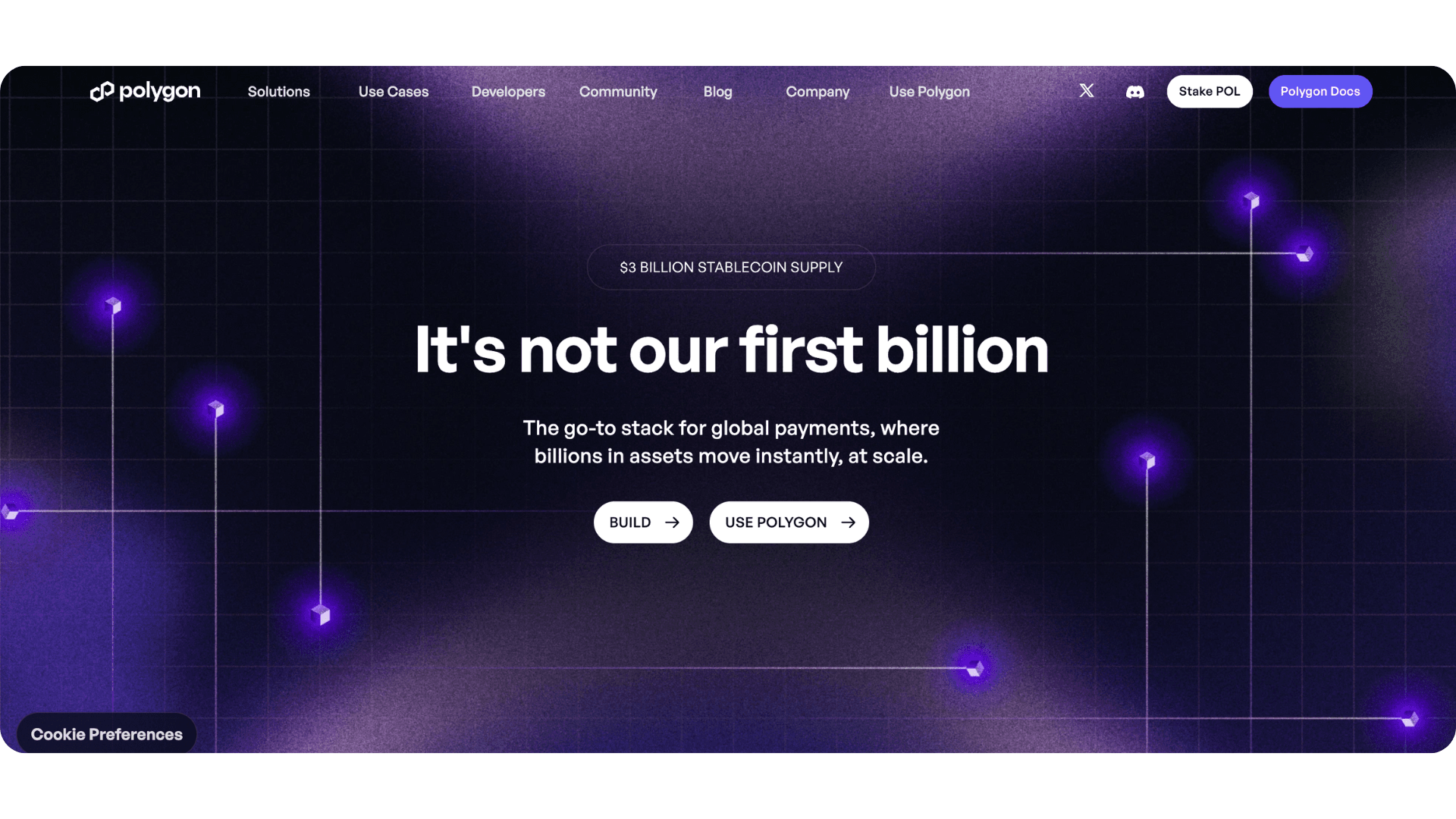 Polygon's ecosystem strategy extends beyond just zkEVM. The Polygon CDK (Chain Development Kit) allows developers to launch their own ZK-powered chains, and the AggLayer stitches liquidity and finality across Polygon's network. This creates a "superchain" of interconnected ZK rollups, each benefiting from shared liquidity and unified security.
Polygon's ecosystem strategy extends beyond just zkEVM. The Polygon CDK (Chain Development Kit) allows developers to launch their own ZK-powered chains, and the AggLayer stitches liquidity and finality across Polygon's network. This creates a "superchain" of interconnected ZK rollups, each benefiting from shared liquidity and unified security.
Real-Life Use Case: Gaming and NFT Infrastructure
Several Web3 gaming studios have migrated to Polygon zkEVM, attracted by the combination of low costs and EVM compatibility. One gaming platform reported that transaction costs for in-game actions dropped from $2-3 on Ethereum mainnet to under $0.05 on Polygon zkEVM, making blockchain gaming economically viable for the first time. The platform maintained all existing smart contracts and front-end infrastructure, requiring just minor configuration changes. The main criticism? Some users have pointed to higher fees compared to competitors and concerns about the role of MATIC tokens in zkEVM operations. Nevertheless, Polygon's massive ecosystem and institutional backing make it a cornerstone project in the ZKP space.
4. Scroll: The Bytecode-Equivalent zkEVM
As of June 2025, Scroll dominates the zkEVM space with $748 million in TVL, ranking as the third-largest Ethereum L2 and the largest zkEVM by market share. What sets Scroll apart is its commitment to bytecode-level equivalence with Ethereum, providing a user and developer experience that's nearly identical to mainnet.
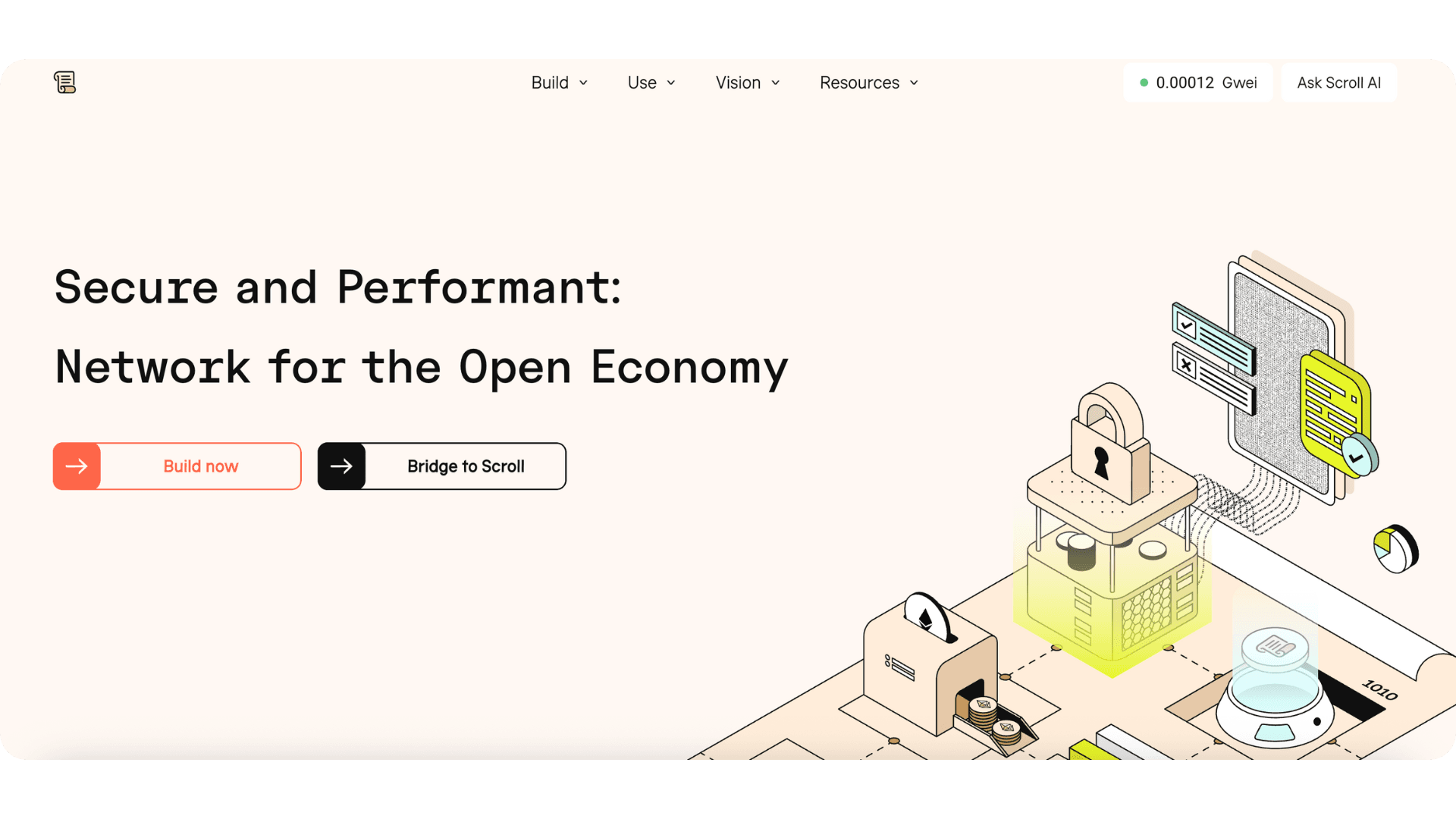 The equivalence advantage means that applications on Ethereum can migrate to Scroll with virtually zero code modifications. Every EVM opcode is supported directly, and the entire Ethereum tool ecosystem - MetaMask, Hardhat, Remix - works seamlessly. For developers, this eliminates the "translation layer" that can introduce bugs or unexpected behavior.
Scroll's technical innovation extends to its decentralized proof generation network. Rather than relying on centralized provers, Scroll distributes ZKP computation across a network of validators. This approach enhances decentralization while allowing anyone with sufficient computational power to participate in proof generation and earn rewards. The platform introduced Scroll Canvas, a credential system that rewards users based on on-chain activity. This loyalty program has driven significant engagement, with Scroll Sessions rewarding active participants with "Scroll Marks" that influence future token distributions.
The equivalence advantage means that applications on Ethereum can migrate to Scroll with virtually zero code modifications. Every EVM opcode is supported directly, and the entire Ethereum tool ecosystem - MetaMask, Hardhat, Remix - works seamlessly. For developers, this eliminates the "translation layer" that can introduce bugs or unexpected behavior.
Scroll's technical innovation extends to its decentralized proof generation network. Rather than relying on centralized provers, Scroll distributes ZKP computation across a network of validators. This approach enhances decentralization while allowing anyone with sufficient computational power to participate in proof generation and earn rewards. The platform introduced Scroll Canvas, a credential system that rewards users based on on-chain activity. This loyalty program has driven significant engagement, with Scroll Sessions rewarding active participants with "Scroll Marks" that influence future token distributions.
Real-Life Use Case: Seamless DeFi Migration
When Aave, one of the largest DeFi lending protocols, deployed on Scroll, the migration required zero contract modifications. The team reported that the deployment process was identical to deploying on Ethereum mainnet, with integration taking just hours instead of the weeks typically required for other Layer 2 solutions. Users experienced the same interface and functionality, but with transaction costs reduced by over 95%. That said, Scroll's token launch in October 2024 was controversial, with initial price volatility affecting community sentiment. The SCR token recovered from its April 2025 low but faces ongoing questions about tokenomics and governance.
5. Aztec Network: The Privacy-First Smart Contract Platform
Aztec Network pioneers fully private smart contracts on Ethereum, addressing what many consider the "missing piece" of blockchain infrastructure—true privacy for both transactions and computation. With $100 million in funding led by a16z crypto, Aztec is building what it calls the first hybrid ZK rollup. The hybrid architecture combines two layers of zero-knowledge proofs: one layer encrypts transactions to make them private, while a second layer compresses transactions before submitting them to Ethereum. This dual-layer approach enables both privacy and scalability - something traditional blockchains struggle to provide simultaneously. Aztec developed Noir, a domain-specific language for writing zero-knowledge circuits. Noir makes it significantly easier for developers to build privacy-preserving applications without needing deep cryptography expertise. The Stellar Development Foundation's collaboration with Aztec to introduce NoirLang has further lowered entry barriers, making ZKP development accessible to a broader developer audience. Aztec Connect, the platform's privacy-focused bridge solution, allows mainstream Ethereum dApps to integrate privacy features without rebuilding their entire infrastructure. This enables users to interact with popular DeFi protocols like Aave and Curve while keeping their transaction details confidential.
Real-Life Use Case: Confidential DeFi
A financial institution testing Aztec Network for corporate treasury management reported the ability to execute on-chain payments and settlements while keeping transaction amounts, counterparties, and timing completely private. The system maintained full Ethereum security while providing the confidentiality level required for institutional adoption. This represents a breakthrough for bringing traditional finance operations onto public blockchains. However, Aztec faces significant challenges. Its non-EVM architecture means developers must learn new tools and languages. Additionally, privacy features make Aztec a potential target for regulatory scrutiny, as privacy solutions navigate complex compliance landscapes across different jurisdictions.
6. Mina Protocol: The 22KB Blockchain
Mina Protocol takes a radically different approach to blockchain scaling, using recursive zk-SNARKs to compress the entire blockchain into a constant size of just 22 kilobytes. Yes, you read that correctly - the entire blockchain state can fit into a text message. Why size matters: Traditional blockchains grow larger over time as more transactions are added, creating barriers for participation. Bitcoin's blockchain exceeds 500GB, requiring significant storage and sync time. Mina's succinct blockchain means anyone can run a full node on a smartphone, fundamentally democratizing blockchain access.
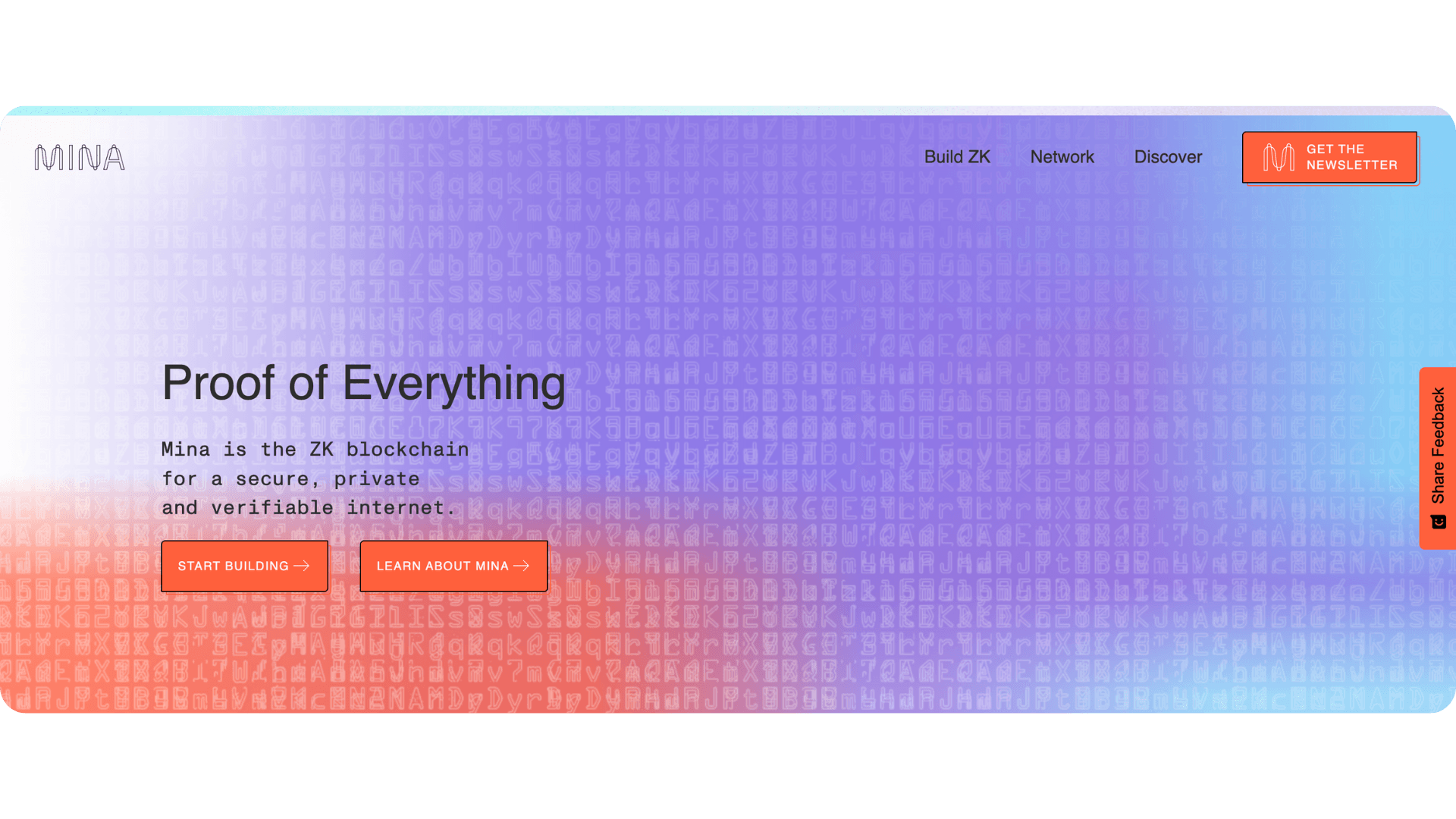 The platform achieves this through recursive SNARK composition, where each new block contains a proof that verifies not just the new transactions, but also proves that all previous blocks were valid. This creates a "proof of proofs" that compresses an infinite chain of computations into a fixed-size proof. Mina's o1js framework allows developers to build "zkApps", zero-knowledge applications using TypeScript. These privacy-preserving applications can verify off-chain computations and private data without revealing the underlying information. The framework's familiarity (TypeScript) lowers the barrier for traditional web developers entering the blockchain space.
The platform achieves this through recursive SNARK composition, where each new block contains a proof that verifies not just the new transactions, but also proves that all previous blocks were valid. This creates a "proof of proofs" that compresses an infinite chain of computations into a fixed-size proof. Mina's o1js framework allows developers to build "zkApps", zero-knowledge applications using TypeScript. These privacy-preserving applications can verify off-chain computations and private data without revealing the underlying information. The framework's familiarity (TypeScript) lowers the barrier for traditional web developers entering the blockchain space.
Real-Life Use Case: Decentralized Identity Verification
A healthcare consortium piloted the Mina Protocol for patient identity verification across multiple hospital systems. Healthcare providers could verify that a patient met specific criteria (age, insurance coverage, vaccination status) without accessing complete medical records. The 22KB blockchain meant the verification system could run on mobile devices used by frontline healthcare workers, even in areas with limited connectivity. The result? Instant, privacy-preserving identity verification that complied with healthcare regulations. The challenge? Mina's unique architecture means fewer off-the-shelf tools and a smaller developer ecosystem compared to EVM-compatible solutions. The MINA token's inflationary model (no supply cap) also raises long-term value concerns for some investors.
7. Loopring: The Decentralized Exchange Pioneer
Loopring has been a pioneer in applying zero-knowledge rollups to decentralized trading since well before the current ZKP boom. The protocol leverages zkRollups to enable high-throughput, low-cost trading on Ethereum, processing over 2,000 transactions per second. The Loopring difference lies in its specialized focus on decentralized exchange functionality. Rather than building a general-purpose Layer 2, Loopring optimized specifically for trading operations. The protocol's "ring mining" mechanism allows specialized actors to match, verify, and settle trading orders off-chain, earning fees for their services. The platform supports both automated market maker (AMM) and order book models, giving users flexibility in trading strategies. Loopring has built several non-custodial products on its Layer 2, including the Loopring Wallet and Loopring Exchange, demonstrating the practical viability of its technology.
Real-Life Use Case: Cost-Effective DeFi Trading
During periods of high Ethereum congestion in 2024, when mainnet transaction costs exceeded $50, Loopring users continued trading with fees under $0.50. A quantitative trading firm reported that migrating to Loopring reduced their monthly trading costs by 94%, transforming previously unprofitable strategies into viable operations. The firm maintained the same security guarantees as the Ethereum mainnet while achieving near-instant trade execution. That said, Loopring's reliance on more complex zkRollup technology has created barriers to widespread adoption. The protocol requires deeper technical knowledge to integrate effectively, limiting its appeal to non-technical users. Additionally, Loopring's position has become more competitive as general-purpose Layer 2 solutions have improved their trading capabilities.
8. Immutable X: The NFT and Gaming Powerhouse
Immutable X has carved out a dominant position in Web3 gaming and NFT infrastructure, leveraging StarkEx and zero-knowledge rollups to enable gas-free NFT minting and trading. The platform has facilitated tens of millions of NFT transactions, even during periods of extreme Ethereum network congestion. What makes Immutable X compelling for gaming? The platform processes thousands of transactions per second with zero gas fees for users, making blockchain gaming economically viable. Traditional Ethereum NFT transactions can cost $20-100 during peak times - completely prohibitive for in-game asset transfers. Immutable X eliminates this friction while maintaining Ethereum's security. The partnership with StarkWare provides Immutable X with cutting-edge ZKP technology, while the team's focus on gaming and NFTs has resulted in specialized APIs, SDKs, and tools optimized for game developers. Major gaming studios, including Ubisoft and GameStop, have built on or partnered with Immutable X.
Real-Life Use Case: Scalable Web3 Gaming
Gods Unchained, a trading card game built on Immutable X, has facilitated millions of card trades and tournaments. Players can freely trade cards between matches without worrying about gas fees or waiting for transaction confirmation. The game reported that eliminating gas fees increased player trading activity by over 300%, creating a more vibrant in-game economy. Users experienced the seamlessness of traditional gaming while retaining true ownership of their digital assets. However, Immutable X's application-specific focus means it's not suitable for general-purpose smart contracts. Developers building non-gaming applications will find better options elsewhere. In the realm of gaming and NFT use cases, Immutable X's specialized optimization delivers unmatched performance.
9. Zcash: The Original Privacy Cryptocurrency
Zcash holds historical significance as the first cryptocurrency to implement zk-SNARKs for shielded transactions in 2016. While newer projects have expanded ZKP applications beyond simple privacy coins, Zcash remains a crucial benchmark for what zero-knowledge proofs can achieve.
The shielded transaction model allows Zcash users to choose between transparent and private transactions. When using shielded addresses, transaction amounts, sender addresses, and recipient addresses are all cryptographically obscured while still being verified as valid by the network. This provides financial privacy comparable to cash, but in digital form.
Zcash's zk-SNARK implementation has been battle-tested over nearly a decade, with the cryptographic foundation proving robust against attacks. The project's focus on privacy has attracted users valuing financial confidentiality, from individuals concerned about surveillance to businesses protecting commercially sensitive transactions. However, Zcash faces significant challenges in 2025. The narrative around privacy coins has become more complicated, with regulatory pressure increasing globally. Additionally, newer projects have demonstrated that ZKPs can provide privacy while also enabling complex smart contracts and DeFi functionality, making Zcash's single-purpose approach feel limited by comparison.
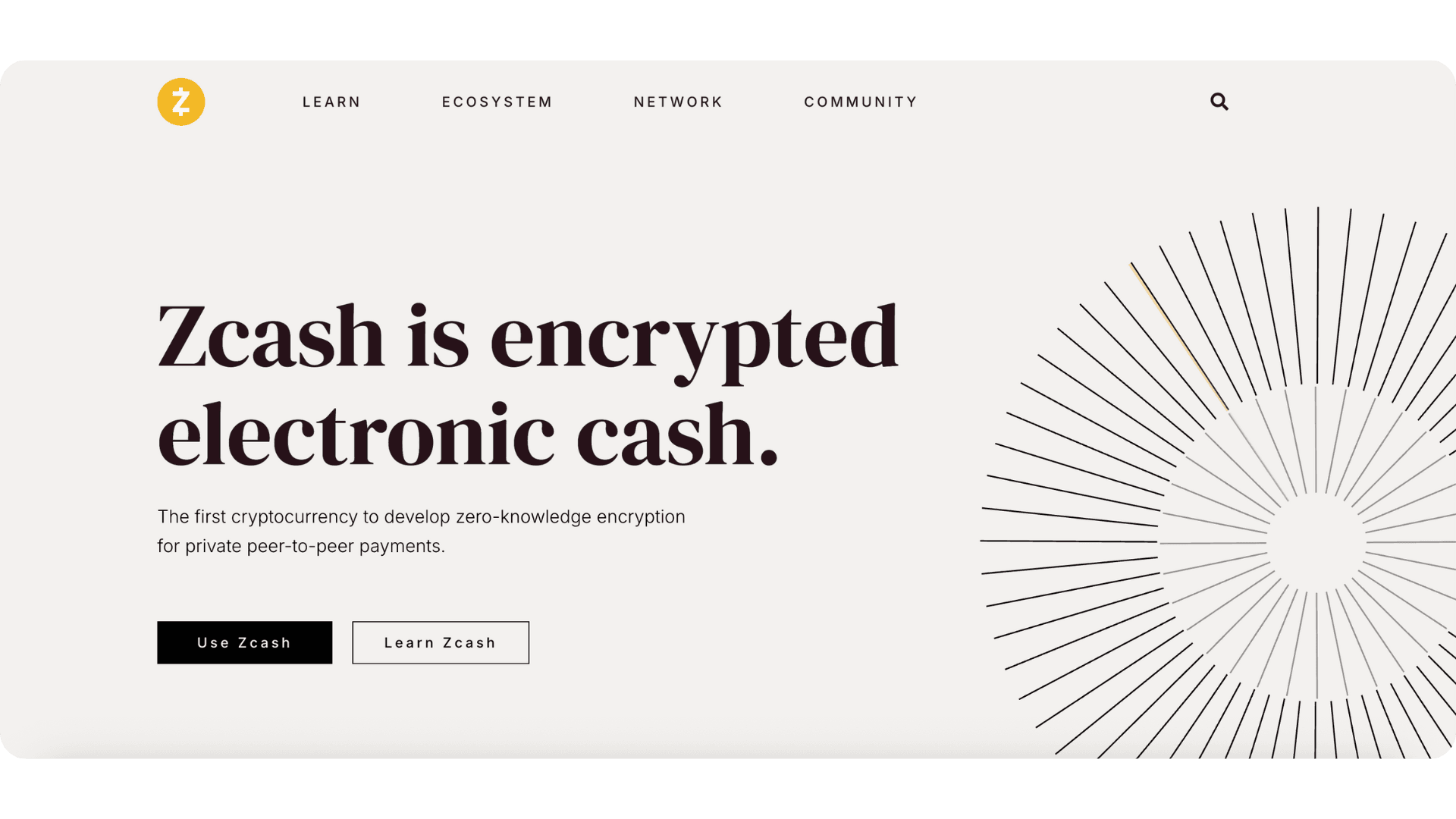
Real-Life Use Case: Confidential Business Payments
A multinational corporation piloted Zcash for confidential payments to suppliers, where revealing payment amounts could expose commercially sensitive information about production volumes or material costs. The company reported successful settlement of payments while keeping transaction details private from competitors monitoring public blockchains. However, regulatory uncertainty ultimately prevented broader adoption. The market capitalization of around $346 million reflects Zcash's shrinking position relative to newer ZKP projects. While historically important, Zcash struggles to compete with platforms offering privacy plus programmability.
10. Linea: The ConsenSys-Backed zkEVM
Linea, incubated by ConsenSys (the team behind MetaMask), has experienced explosive growth since its mainnet launch. As of September 2025, Linea boasts nearly $2 billion in TVL, with daily active addresses and transaction counts increasing by over 400% from previous lows. The ConsenSys advantage provides Linea with native integration into the most widely used Ethereum tools. MetaMask, Truffle, and Infura support comes out of the box, creating the smoothest developer and user experience of any zkEVM. For developers familiar with Ethereum, deploying to Linea requires literally zero code changes. Linea implements a Type 2 zkEVM approach, achieving near-perfect Ethereum equivalence at the VM level. The platform doesn't use transpilers or custom compilers—it takes compiled Solidity bytecode and generates ZK proofs directly. This reduces the risk of bugs and security vulnerabilities that can be introduced by translation layers. The Linea Ignition incentive program, allocating 1 billion LINEA tokens, has catalyzed significant ecosystem development. Projects building on Linea benefit from ConsenSys's extensive network and resources, accelerating go-to-market timelines.
Real-Life Use Case: Cost-Effective DeFi
Etherex, the second-largest protocol on Linea with $232 million TVL, demonstrates the platform's DeFi viability. The MetaDEX channels 100% of trading fees directly to stakers and all liquidity fees to LPs, creating aligned incentives. During the September 2025 TVL surge, Etherex's REX token appreciated 23%, showing that Layer 2 protocols can create significant value while maintaining user affordability. Transaction costs on Linea average just $0.05-0.15, compared to $2-5 on the Ethereum mainnet. The main uncertainty? Linea's upcoming token generation event (TGE) will determine tokenomics, governance structure, and long-term incentive alignment. The platform has learned from competitors' controversial launches, but execution risk remains.
Comparing ZKP Approaches: Which Project Fits Your Needs?
Here's where things get a bit more complicated. Each of these projects makes different technical and philosophical trade-offs. Let's explore when to use each approach:
For maximum EVM compatibility → Scroll, Linea, or Polygon zkEVM offer the smoothest migration path for existing Ethereum applications.
For maximum performance → StarkNet's custom VM approach and Cairo language enable optimizations impossible in EVM-compatible systems.
For privacy-preserving smart contracts → Aztec Network is purpose-built for confidential computation on public blockchains.
For ultralight infrastructure → Mina Protocol's 22KB blockchain enables participation from resource-constrained devices.
For NFT and gaming-specific optimization → Immutable X's specialized focus delivers the best gaming experience.
For decentralized trading → Loopring's ring mining and specialized DEX functionality outperform general-purpose solutions for trading.
The Challenges Ahead
That said, zero-knowledge proof projects come with unique challenges that require understanding and planning. Proof generation requires significant computational power, increasing costs for operators. Some projects address this through hardware acceleration and distributed prover networks, but the computational burden remains higher than traditional blockchains. Developing applications that leverage ZKPs requires advanced cryptography expertise. While tools like Noir, Cairo, and o1js have lowered barriers, the learning curve remains steep compared to traditional web development. Educational initiatives and improved developer tooling continue to evolve, but talent scarcity constraints growth. Integrating ZKP solutions across different blockchains presents technical challenges. Cross-chain composability, the ability for assets and data to move seamlessly between chains, requires standardization efforts still in early stages. Projects like Polygon's AggLayer aim to solve this, but true interoperability remains a work in progress. Finally, regulatory clarity around privacy-preserving technologies varies globally. While ZKPs enable compliant privacy (proving you meet requirements without revealing data), regulators are still developing frameworks for these novel technologies. Projects must navigate this evolving landscape carefully to ensure long-term viability.
The Future of Zero-Knowledge Proofs
Looking ahead, the ZKP market is expected to experience explosive growth through 2025 and beyond. The EU's GDPR and global privacy laws align with ZKP principles, encouraging adoption by businesses in finance, healthcare, and supply chain sectors. Meanwhile, Layer 2 solutions are set to reduce Ethereum gas fees by up to 90%, enabling millions to access Web3 affordably. Hardware acceleration through GPUs, FPGAs, and ASICs is making proof generation faster and cheaper. Developer tools continue improving, with frameworks like Circom, Hardhat plugins, and high-level languages abstracting away cryptographic complexity. These innovations are paving the way for wider adoption beyond the current early-adopter phase. The convergence of zero-knowledge proofs with other cutting-edge technologies presents exciting possibilities. ZK-powered AI verification could enable trustworthy machine learning on encrypted data. Privacy-preserving decentralized identity systems could revolutionize how we manage credentials online. The applications extend far beyond scaling and privacy, touching virtually every aspect of digital infrastructure.
Building the ZKP Future
At Rumble Fish, we've seen firsthand how zero-knowledge proofs transform what's possible in blockchain development. Our work on zero-knowledge proof projects has demonstrated that ZKP technology is ready for production deployment today, not some distant future. Whether you're a crypto investor evaluating which ZKP projects offer the most potential, or a business leader exploring how zero-knowledge cryptography could solve your data privacy challenges, the projects highlighted here represent the cutting edge of what's possible. Each brings unique strengths to the table, from zkSync Era's scalability leadership to Aztec's privacy innovation, from Mina's ultra-lightweight design to StarkNet's industrial performance. The zero-knowledge proof revolution isn't coming, it's already here. With over $28 billion locked in ZK rollups and adoption accelerating across DeFi, gaming, identity, and enterprise applications, ZKP technology has moved from academic curiosity to foundational infrastructure. If you're ready to explore how zero-knowledge proofs can elevate your blockchain project, whether you need privacy-preserving smart contracts, scalable Layer 2 infrastructure, or confidential computation capabilities, our team at Rumble Fish has the expertise to bring your vision to life. We've built production ZKP systems, and we understand both the enormous potential and practical challenges of this transformative technology. Let's connect to discuss how zero-knowledge proofs can power your next breakthrough innovation.







